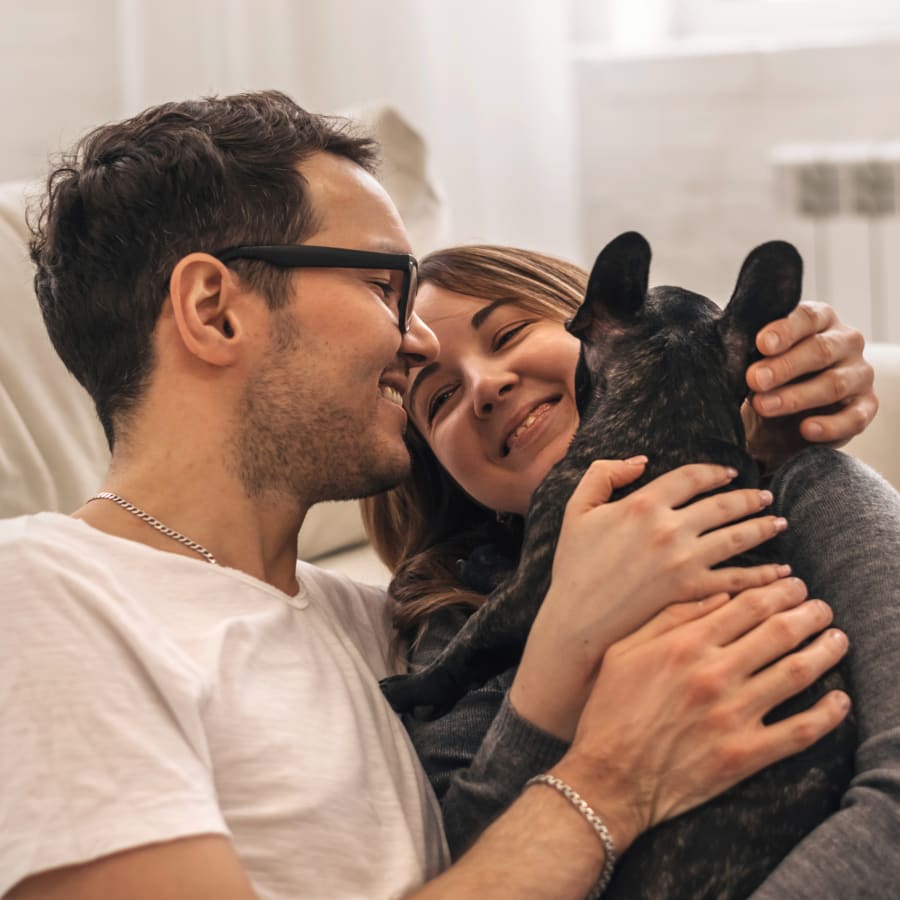Promoting Long-Term Optimal Health For Dogs and Cats
Don't let preventable diseases negatively impact the health of your furry family members. At Mapleview Animal Clinic, we offer a range of vaccines and parasite prevention products to fight against common, highly contagious conditions seen in dogs and cats across Simcoe County.
When combined with annual wellness exams, regularly scheduled vaccines and parasite prevention form the cornerstone of your pet's annual preventive care plan. These services aim to preserve your pet's good health and avoid the need for treatment.
We believe that preventive care gives your companion their best chance at a long, healthy life. Our veterinarians can assess your pet's risk factors and lifestyle and work with you to create a custom plan to meet your pet's unique needs.

Cat & Dog Vaccination Schedule
Keeping your dog or cat's vaccinations current is essential when it comes to protecting them against a range of highly contagious, often serious, diseases.
In their first year of life, kittens and puppies should receive the following vaccines to help protect them from a range of serious diseases:
Cat Vaccinations
-
Kittens - 8 weeks
- FVRCP (Rhinotracheitis, Calicivirus, Panleukopenia, Chlamydia).
-
Kittens - 12 weeks
- Booster: FVRCP (Rhinotracheitis, Calicivirus, Panleukopenia, Chlamydia)
- Feline Leukemia
-
Kittens - 16 weeks
- Rabies
- Booster: Rhinotracheitis, Calicivirus, Panleukopenia, Chlamydia
-
Adult Cats
Your cat should receive a complete series of booster shots one year after they complete their kitten vaccinations.
After that, booster shots for core vaccines should be administered every 1 - 3 years. Your veterinarian will be able to provide you with details regarding when your adult cat should return for their next booster shot.
Approximate booster shot schedule for cats:
- Rabies (Booster every 1 -3 years depending on the vaccine provided)
- FVRCP Vaccine for Rhinotracheitis FHV-1, Calicivirus FCV, Panleukopenia FPL (Booster every 1 - 3 years)
- Feline Leukemia (Booster annually or as determined by your veterinarian, based on your cat's risk factors)
Dog Vaccinations
-
Puppies - 8 weeks
- DHPP (Distemper, Hepatitis, Parainfluenza, Parvovirus)
-
Puppies - 12 weeks
- Booster: DHPP (Distemper, Hepatitis, Parainfluenza, Parvovirus)
- Bordetella (Optional)
-
Puppies - 16 weeks
- Booster: DHPP (Distemper, Hepatitis, Parainfluenza, Parvovirus)
- Rabies
- Booster: Bordetella (Optional)
-
Puppies - 18 weeks
- Leptospirosis (Optional) with a booster in 3-4 weeks
-
Adult Dogs
In order to safeguard your dog's health throughout their lifetime, periodic booster shots will be necessary. Booster shots 'boost' your dog's immunity against the various illnesses vaccinated against during their first year of life.
Booster shot schedules vary between vaccines and based on the dog's risk factors. Your veterinarian will provide you with information on when booster shots should be administered to your canine companion.
Approximate booster shot schedule for dogs:
- DHPP for Distemper, Hepatitis, Parainfluenza and Parvovirus (first booster at 15 months old and then every 2-3 years)
- Rabies (First booster at 15 months old and then every 1-3 years)
- Bordetella (Optional vaccine can be provided every 6 - 12 months depending on risk factors)
- Leptospirosis (Optional vaccine can be provided every 12 months depending on risk factors)
- Lyme (Optional vaccine can be provided every 12 months depending on risk factors)
- Influenza (Optional vaccine can be provided every 12 months depending on risk factors)
Parasite Prevention
Parasites pose a very real threat to the health and longevity of our furry friends, and in some cases, they can even be transmitted to people or other pets living in your household.
Our parasite prevention products can help protect your dog or cat from a variety of common parasites, including fleas, ticks, ear mites, intestinal worms and heartworms.
Spaying & Neutering
Spaying or neutering your cat or dog prevents the birth of unwanted litter and can help protect your pet against illnesses such as mammary (breast) cancer and prostatic diseases.
Microchipping
Microchipping cats and dogs allows your beloved companion to be more easily identified and returned to you if they become lost and are brought to a veterinary office or animal shelter for care.
As small as a grain of rice, microchips are placed under your pet's skin with minimal to no discomfort to your dog or cat and work as a permanent form of pet identification.

